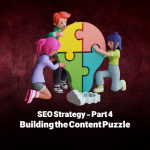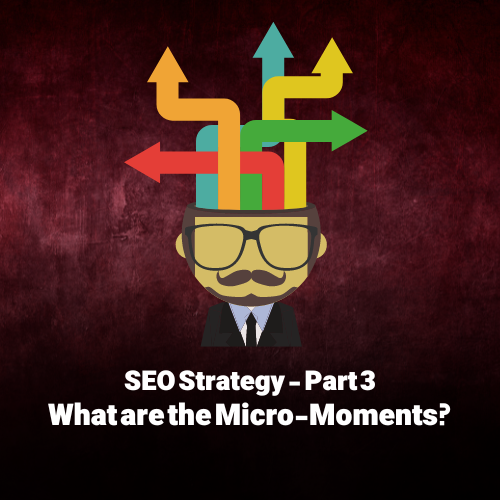Part 3: What are the Micro-Moments?
In part 3, we will review and investigate the meaning of the keywords and try to find out the reasons behind the successful searched keywords. By reading this article, you will understand why some of your keywords don’t perform well and what you should do to make them work for you.
In part 3 we will review and investigate the meaning of the keywords and try to find out the reasons behind the successful searched keywords.
You can either watch the video from Websima or read through this article to complete the third part. (We suggest you watch the video). You can check our SEO Learning Center , SEO Services and SEO Pricing in Australia if you are interested.
Here is where you will understand why some of your keywords don’t work well and what you should do to make them work for you.
For the purpose of understanding the users’ intention, we should understand the ”Micro-Moments”, which is a new subject in SEO. As you probably remember, we, in part one of this training series, explained that you should invest in implications rather than contents. Here in this part, you will totally understand the reason why we need to do so.
There are a big number of “Micro Moments” from the time a user searches for a subject, until becomes your loyal customer. As most users will not be converted to your customer by the first search they do on the internet, you need to take advantage of the “Micro Moments” to improve your chance of converting the visitors to your customers.
What are the Micro-Moments?
We categories them into 4 concepts:
- To-Know: It is related to the searches by which users are looking for information about something.
- To-Go: It is related to the searches by which users are looking for a place or location to go.
- To- Do: It is related to the searches by which users need data to do something.
- To- Buy: It is related to the searches by which users are searching to buy something
We need to find out the Micro-moment’s categories for our keywords. For example, if someone searches for “BMW X5 technical specifications”, he is more likely to be in the first category which is “To know”. However, if someone is searching for “BMW X5 service and repair center in Sydney”, he is looking for a location. So, this keyword would be categorised under the second concept which is “To go”. Also, if someone searches for “How to fix BMW X5 mirrors”, he wants to do something, so it will be under “To-do” category and finally, if someone searches for “buying a BMW X5 in Sydney”, he really wants to buy the car, so it will be categorised under “To buy” concept.
Keep in mind that not all of the searches are that clear. There are some keywords that you cannot categorise clearly. This type of keyword is called “Opacity”. The more the intent of the user is clear, the opacity would be higher. We would also break the opacity down into 3 categories as below:
Specific, Mixed and Unknown.
Don’t worry, if you are a little bit confused, as we will provide you with some examples for your better understanding.
Let’s pick up a keyword like “Lease a car”.
Now, we will check what are the micro-moments and opacity for the “Lease a car” keyword. What are your thoughts on this keyword? What is its opacity and which category would you put it under?
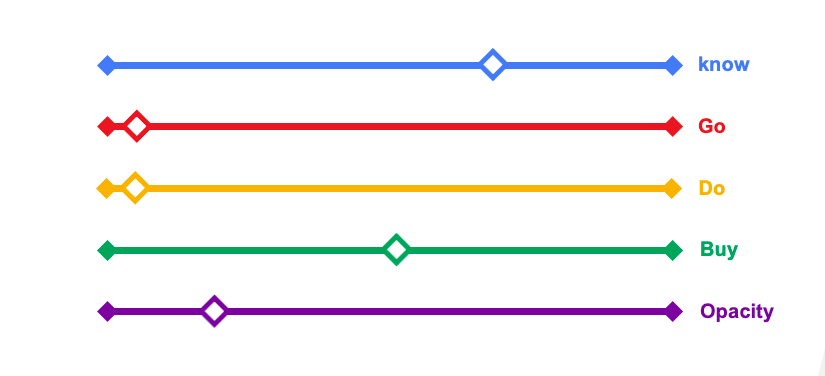
From our point of view, its opacity is quite low, as the exact user’s intention to search for this keyword is pretty much unknown. In our opinion, it can be “To know” or “To buy”. The user may have searched for this keyword to know how to lease a car, though there is a probability that he actually wants to lease a car.
Why is the opacity low? Because we don’t know what kind of car the user wants, how much is the budget and when the car is wanted. Due to these unknowns, we’d say the opacity is low.
Let’s try another keyword. “Lease a car from BMW”. Think about its Micro-moments:
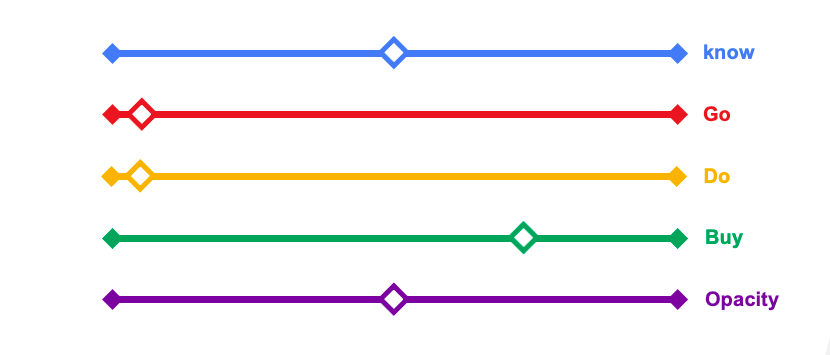
For this keyword, the opacity is a little bit higher, as we at least know the brand that the user is searching for. Also, for this keyword, the probability that the user is willing to buy is more.
Now, we check the “Lease BMW X5 today”, to see how high the opacity would be.
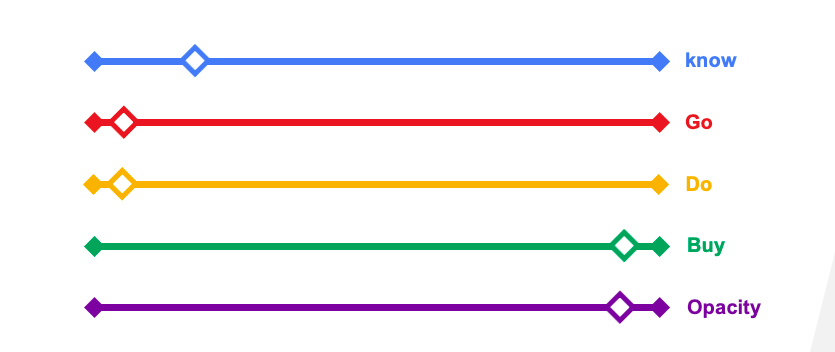
Here, we know what exactly the user is looking for and we even know the budget. We also know that the user wants it urgently. This known information would make the opacity go much higher. It also increases the “To buy” category’s chance significantly.
Generally, when we have a longer keyword created from a combination of keywords, the opacity would be higher and Micro-moments categorisation would be easier.
Let’s try another example.
What do you think about the micro-moments, if someone searches for “Comparing BMW X5 and Volvo XC60”?
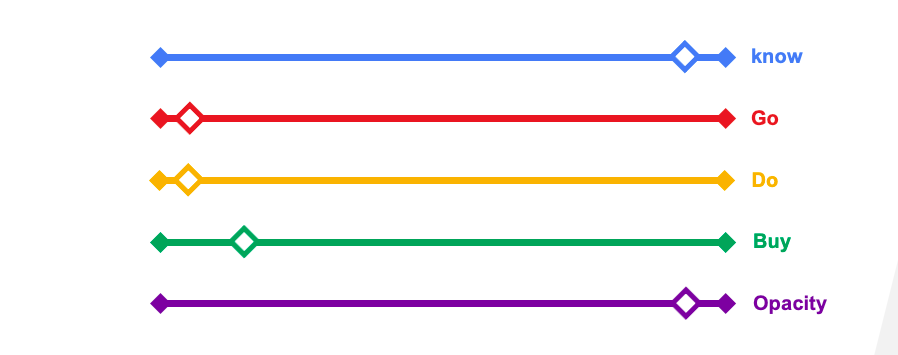
It is clearly under the “to-know” category. Its opacity is also high. There is still a little chance that the user is under the “to-buy” category, though the probability is very low.
Now check this keyword: “BMW Services and repair location”.
Here, “To-go” category clearly has a high chance. “To-do” and “to-know” are very low. But what about the “to-buy” category?
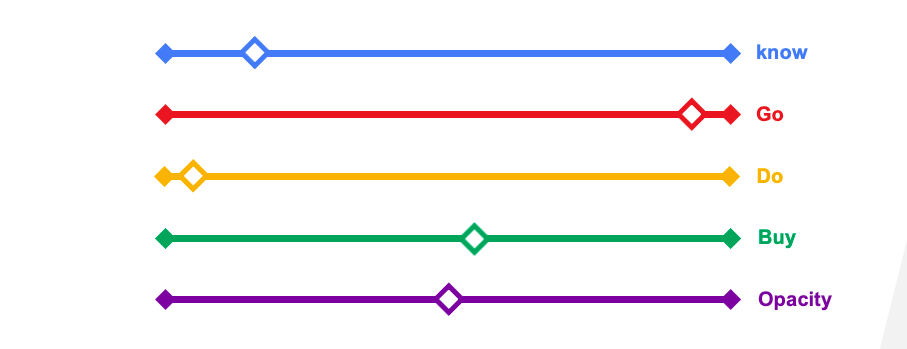
We would assume that it is high, as if you have a garage for BMW services and repairs, such keywords would bring us customers! So, you need to work on it, whether on your website or on the local SEO. Therefore, if you own a lease company in Australia, you should assume the “To-buy” category on this keyword to be very low. But if you have a garage, it can be a good source for your “to-buy” category.
As you have seen, Micro-moments are also dependent on your business, so you should consider everything to evaluate them from different aspects.
How can we categorise complicated keywords?
Till now, we have figured out that you need to understand the micro-moments of all keywords you’ve found for your project. However, in some cases, it is not easy to do so, as there are some mixed concepts which are not straightforward enough to be categorised. The question here is how we can categorise them.
The best method to do so is to check it on Google. Google is optimising itself by user-experience, so we can trust Google’s results.
In our previous examples, we evaluated “Comparing BMW X5 and Volvo XC60”. Our interpretation was that its micro-moments should most likely be “to-know”. Let’s also check our interpretation on Google. If we search this on Google, you would see the results as below:
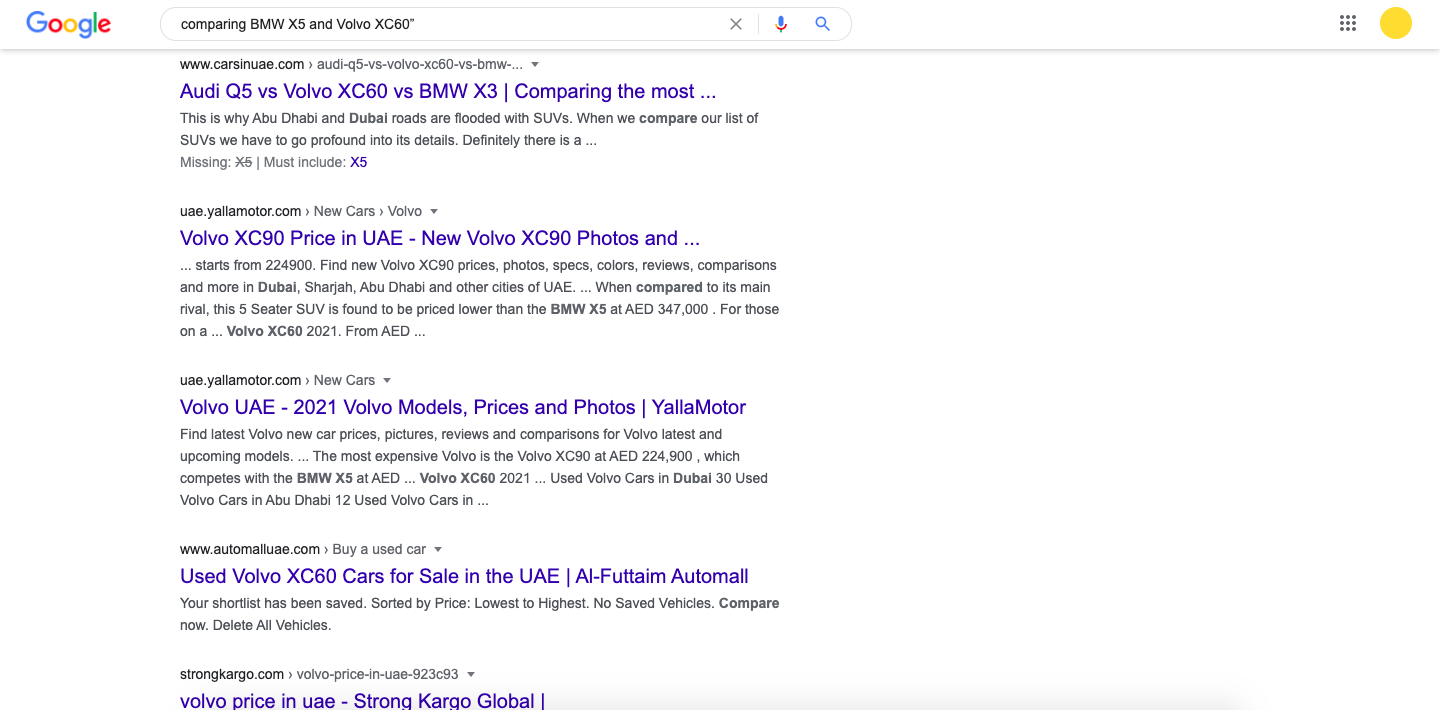
As you can see in the image above, all of the results sit under the “to-know” category. You may check the websites one by one to make sure. In those websites, there is no product to buy or location to go or things to do. Therefore, our interpretation was accurate.
There is an important point we want to mention here:
As the search phrase becomes longer:, its probability to be in the “to-buy” category increases.
Let’s try an example step by step. Firs search for “Cars”:
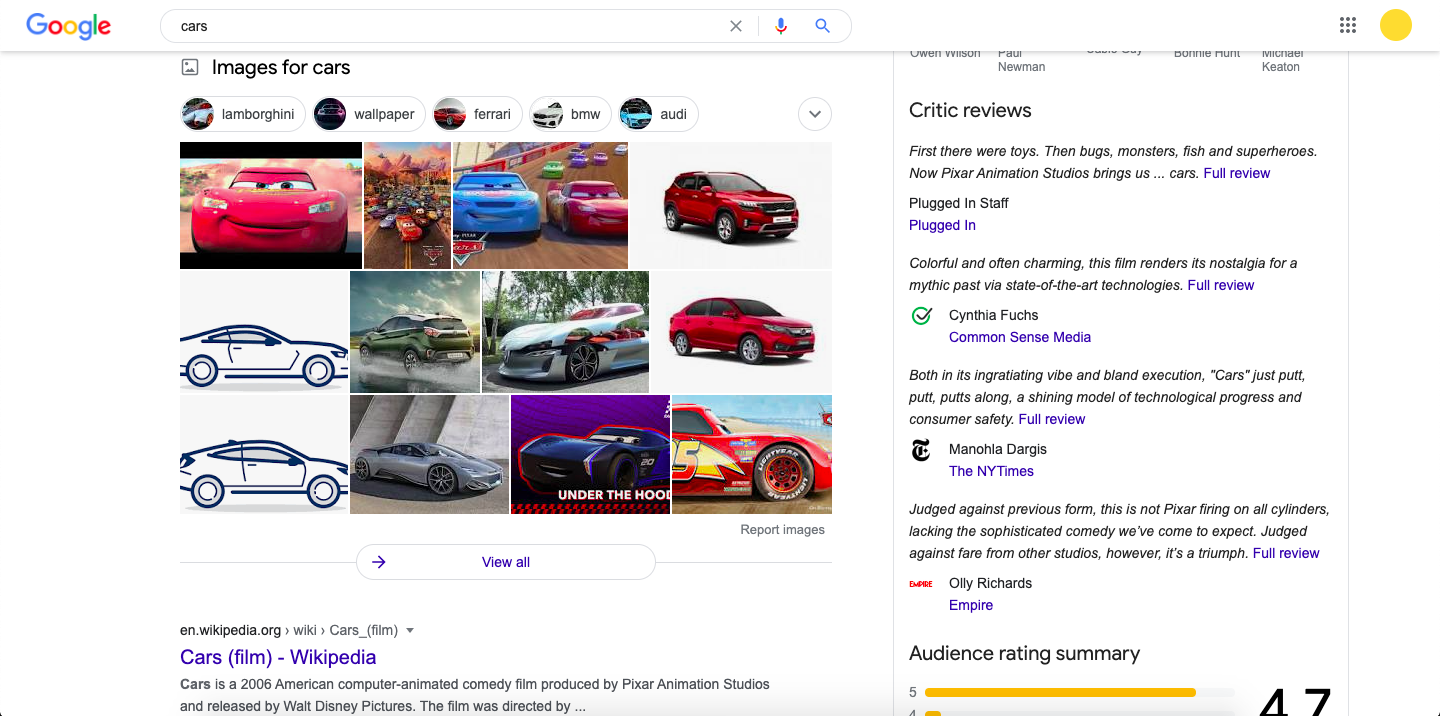
The first thing you see are images. The second suggestion is Wikipedia, and both are in the “to-know” category.
Now if we change “cars” to “buy cars”, the result would be as below:
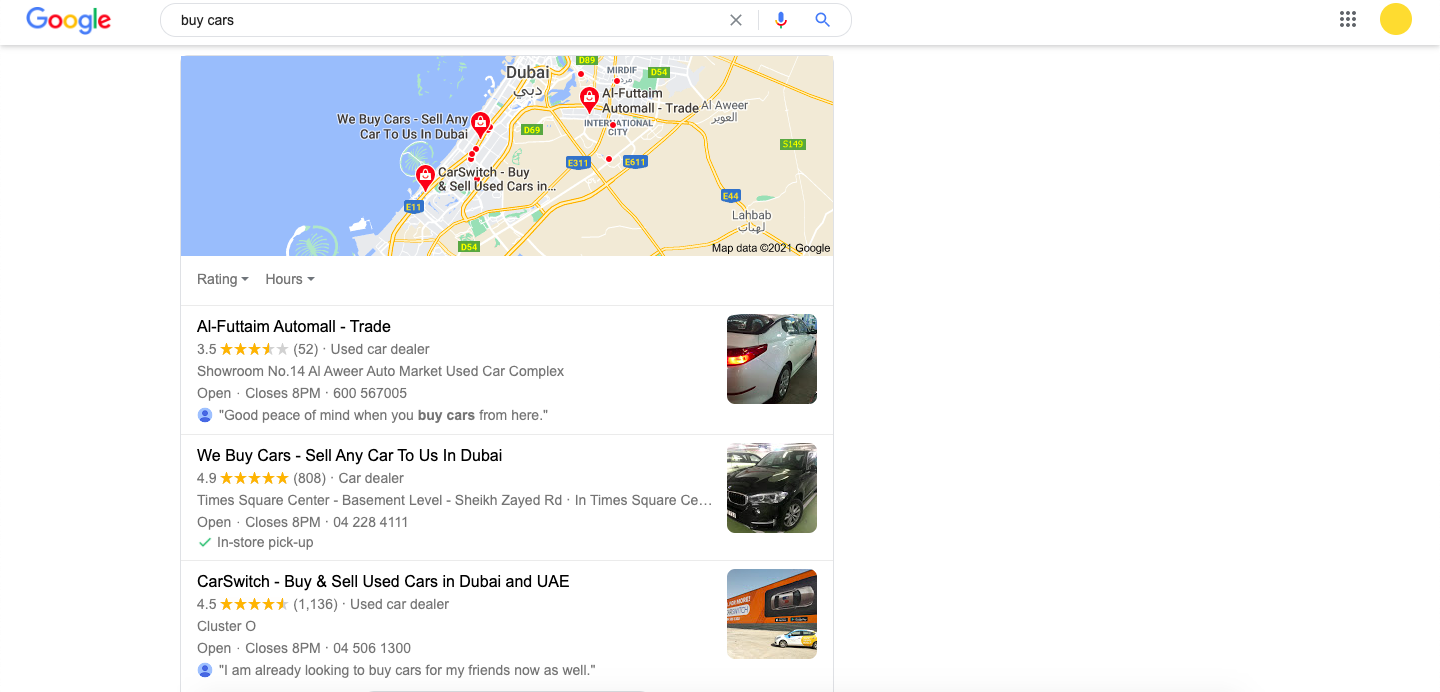

As you can see, the first suggestion is the locations, so it is a “to-go” micro-moments. However, the next 5 suggestions are all in the “to-buy” category. Likewise, if we change the phrase to “buy sport cars online”, then you will have the first 20 suggestions all under the “to-buy” category.
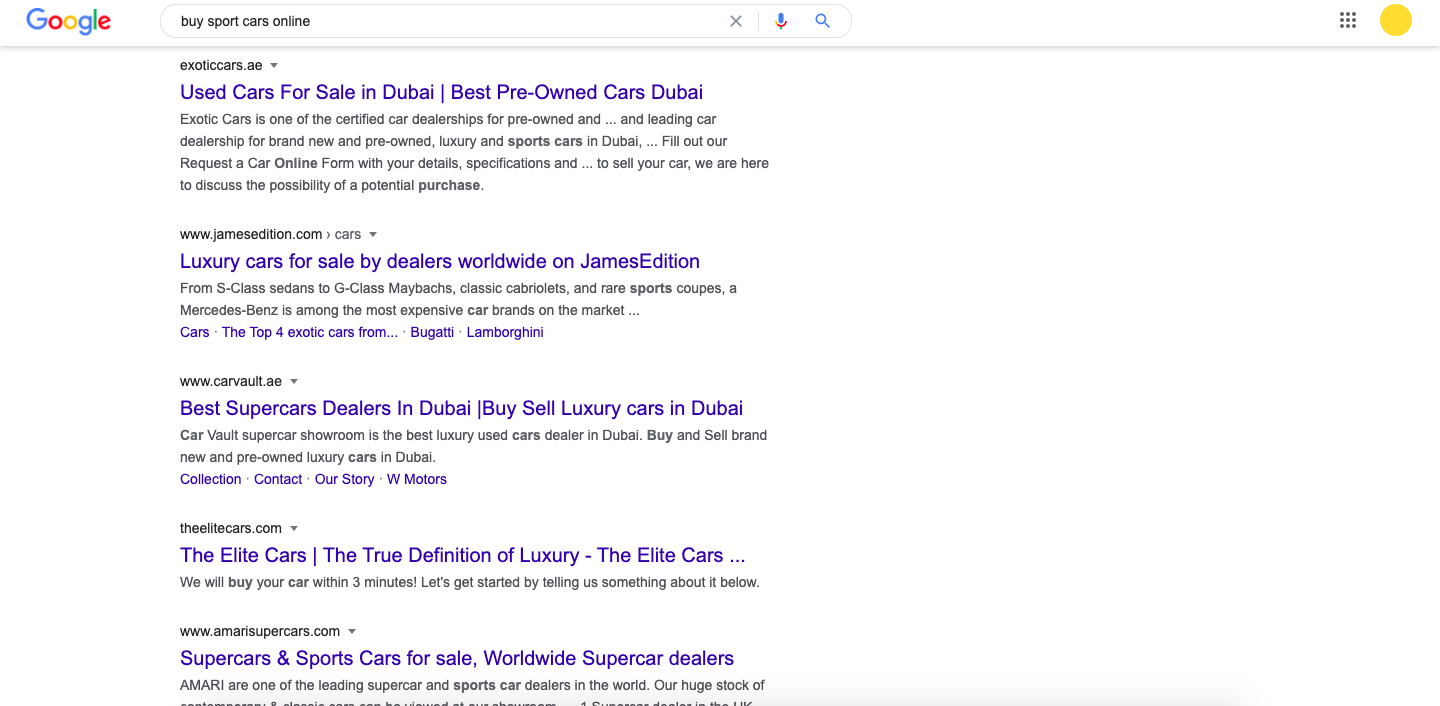
It means that the more specific and longer the searched keywords are, the more the possibility of the user’s intention to buy something would be.
So, we talked about the micro-moments, but how can we plan our strategies accordingly?
Strategies
- Be different!
If the intention of all webpages for a specific search is the same, there is still a small probability that some user’s intention is different, so you can spot them by being different.
For example, if you search for “buy backlink”, the results are always “to-buy”. However, there are still some users who want to only know about the backlinks. So, it can also be a little bit “to-know”, but there is no result for that. In this case, you can work on the “to-know” concept for this keyword and attract visitors.
- Be an opportunist
When there are different micro-moments for a specific keyword, invest in the category in which you have weaker competitors!
To do so, you need to categorise the competitors by their micro-moments concept. Then try to find the weaker ones and work on it.
- Mix it up!
When a keyword has more than one category, try to work on all of them! For example, if a keyword is “to-buy” and also “to-know” but your competitors have worked on one of them only, you can come up with a new idea and cover both categories in your website.
- Be loyal
When you believe that a keyword absolutely sits under one category, and Google also confirms it, be loyal to that interpretation. In this case, even if you invest in other micro-moments categories, you will end up with no desired result. The only way to compete here is to produce strong content that we will talk about in next seasons.
We are at the end of part 3.Now, we have found out our keywords and categorised them. We have also figured out the relevant macro-moment each keyword sits under.
In part 4 we will try to explain how to build your content puzzle.
You can comment your experience & questions here and we will try to respond back, as soon as possible.



